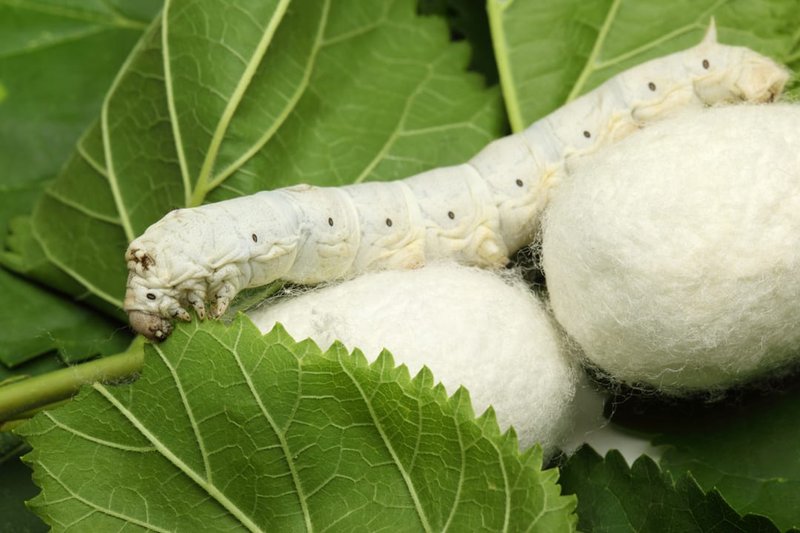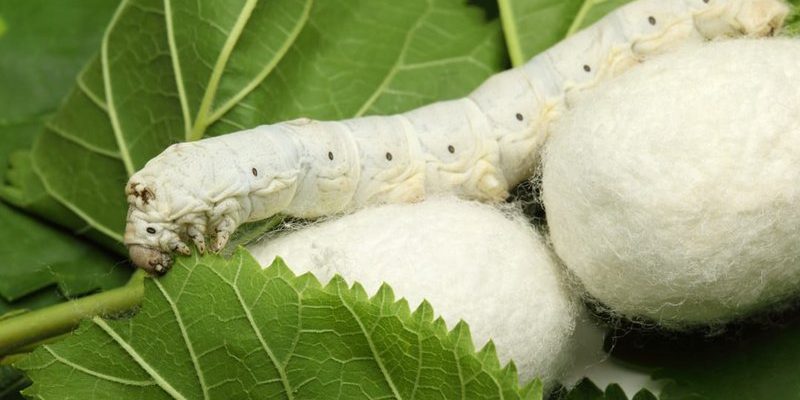
In the world of sericulture, silkworms are the stars of the show. They spin delicate cocoons that, when harvested and processed, become the silk we cherish in clothing, accessories, and even home decor. This age-old art has been practiced for thousands of years, particularly in countries like China and India. The entire process is fascinating, involving meticulous care, patience, and a blend of science and artistry. Here’s what you need to know about the role of silkworms in traditional sericulture and why it still matters today.
What Are Silkworms?
Silkworms are not just any caterpillars; they are the larvae of the *Bombyx mori* moth. These creatures are known for their ravenous appetite, primarily feasting on mulberry leaves. In fact, they can consume around 100 times their body weight! This intense feeding results in rapid growth, and after about 25 days, they’re ready to start their transformation into moths.
Once they’ve reached maturity, silkworms enter the cocoon stage. This is where they spin a silk thread around themselves, forming a protective case. The process can take up to three days, during which the silkworm produces a single continuous thread that can be over a mile long! Imagine that—a single thread of silk made from a tiny caterpillar. This silky cocoon becomes the primary source of silk in sericulture.
The History of Sericulture
The practice of sericulture dates back over 5,000 years, with its origins believed to be in ancient China. According to legend, Empress Xi Ling Shi discovered silk when a silkworm cocoon fell into her tea. Intrigued, she unraveled the delicate threads, leading to the secretive art of silk production. For centuries, silk was a luxurious item, reserved for royalty and the elite.
As trade expanded along the famed Silk Road, the demand for silk skyrocketed. This plush fabric became a symbol of wealth and prosperity, influencing trade routes and even fostering cultural exchanges between East and West. Over time, sericulture spread to other parts of Asia and eventually to Europe and the Americas. Today, while synthetic fabrics have altered the textile landscape, traditional sericulture remains an essential cultural practice in many regions.
How Sericulture Works
Sericulture is a labor-intensive process that requires careful planning and execution. Here’s a simplified overview of how it works:
- Egg Selection: It all starts with selecting high-quality silkworm eggs. Breeders often choose eggs from the best moths to ensure strong, healthy larvae.
- Hatching: After about 10 days, the eggs hatch into tiny silkworms, which are then carefully fed mulberry leaves. This stage lasts about 25 days.
- Cocoon Spinning: Once the silkworms are fully grown, they begin spinning their cocoons. This is a crucial moment in the process, as the quality of the silk is determined here.
- Cocoon Harvesting: After about 3 days, the cocoons are harvested. Timing is vital; if the moth emerges, it will break the silk thread.
- Sewing & Weaving: Finally, the cocoon threads are unraveled, and the silk is spun into yarn, ready to be woven into beautiful fabrics.
Each of these steps requires careful attention, as the quality of the final silk product depends on how well each phase is executed.
The Importance of Silkworms in Sericulture
Silkworms are not just a curiosity; they are vital for the economic and cultural fabric of many societies. In regions where sericulture thrives, it provides livelihoods for countless families. From farmers who cultivate mulberry trees to weavers creating intricate patterns, silkworms connect people through a shared passion for this ancient craft.
Moreover, sericulture supports local economies. The silk industry is a source of employment, not just for farmers but also for artisans, tailors, and even those in the fashion industry. It creates a ripple effect, fostering community bonds and cultural pride. So, when you wear silk, you’re not just wearing fabric; you’re supporting a tradition that has lasted for generations.
Silkworm Cultivation Techniques
Cultivating silkworms isn’t as simple as it may seem; it involves specific techniques to ensure healthy growth and high-quality silk production. Here’s a breakdown of some essential practices used in traditional sericulture:
- Temperature & Humidity Control: Silkworms thrive in specific temperature and humidity levels. Farmers often maintain a controlled environment, as extreme conditions can harm the larvae.
- Feeding Regimen: Farmers must ensure the silkworms receive plenty of mulberry leaves, which need to be fresh and pesticide-free. Overfeeding or underfeeding can affect growth.
- Cleanliness: Keeping the rearing area clean is crucial. Silkworms are susceptible to diseases, so maintaining hygiene helps prevent outbreaks.
- Harvest Timing: Knowing precisely when to harvest cocoons is an art. Timing affects the quality and quantity of silk produced, making it a critical step.
These techniques, passed down through generations, reflect a deep understanding of both the silkworms and their environmental needs.
The Future of Sericulture and Challenges Ahead
While traditional sericulture is rich in history, it faces challenges in modern times. Globalization, changing fashion trends, and synthetic alternatives put pressure on the silk industry. But there’s hope! Many artisans and farmers are finding innovative ways to keep sericulture alive.
For instance, some are combining traditional practices with modern technology to improve efficiency and sustainability. Others are focusing on organic silk production, which is gaining popularity among eco-conscious consumers. This not only supports the environment but also helps preserve the time-honored techniques of sericulture.
Additionally, educational programs aim to teach younger generations about the importance of sericulture, ensuring that this beautiful craft continues for years to come. The world is starting to appreciate the value of handmade, artisanal products, giving silkworms a newfound respect.
Why Sericulture Matters Today
Understanding the role of silkworms in traditional sericulture allows us to appreciate the artistry and dedication involved in producing silk. This isn’t just about fabric; it’s about culture, history, and the people who dedicate their lives to this ancient craft. As we become more aware of sustainable practices and the stories behind what we wear, supporting industries like sericulture becomes increasingly important.
So, the next time you drape yourself in silk, remember the silkworms and the hard work that brought that fabric to life. Their role in traditional sericulture is not just significant; it’s a testament to human creativity and resilience.
In conclusion, the journey from silkworm to silk is a fascinating one filled with rich history and cultural significance. By understanding the role of silkworms in traditional sericulture, we can appreciate the beauty not just in the product but in the process itself.

